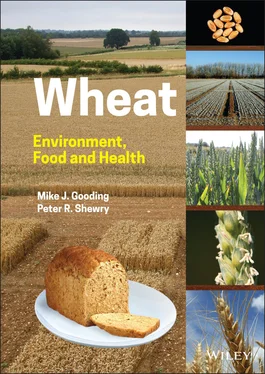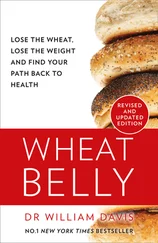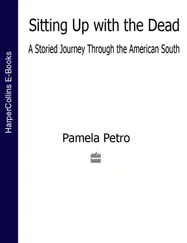Although protein concentration is not the same as protein quality, a minimum protein concentration is required for breadmaking and increasing protein concentration can, to some extent, compensate for lower quality. Hence, higher protein concentrations are required for pasta and breadmaking than for other uses ( Figure 1.22). The minimum requirement for the CBP is around 13% DM. Products requiring a weak, extensible dough, such as biscuits, cakes, and pastries, usually require a protein content of less than 10.5% DM and levels down to 9% can be tolerated for some products (Carson and Edwards 2009). Low protein concentrations, and therefore high starch contents, are associated with higher alcohol yields in distilling and bioethanol industries (Taylor et al. 1993).
1.5.4.5 Importance of Protein Quality
In addition to protein concentration, the relative proportions and subunit compositions of the gliadin and glutenin fractions also have significant effects on dough rheology and functionality for different end uses. In broad terms, gliadins contribute to the viscosity and extensibility and glutenins to the elasticity and strength of doughs (Rustgi et al. 2019). The proportions of gliadins and glutenins may vary between genotypes (Wieser 2000) and there are also significant differences in quality associated with allelic variation in the protein compositions of the two fractions. In particular, one group of gluten proteins, the high molecular weight subunits of glutenin, are widely used as biochemical markers for dough strength (see Chapter 8and Payne et al. 1987) based on analysis by sodium dodecylsulphate polyacrylamide gel electrophoresis or by capillary or reversed‐phase high‐performance liquid‐chromatography (RP‐HPLC) (Rustgi et al. 2019).
The strong genetic control of protein quality means that cultivars are often grouped based on their intended end use. For example, in the UK cultivars are grouped depending on whether they have potential for breadmaking (Groups 1 and 2), biscuit making (Group 3), or neither end use (Group 4).
The proportions and compositions of the gliadin and glutenin fractions are also affected by environmental factors, which can lead to effects on processing quality. For example, the availability of S is particularly important as it affects the ratio of N : S in the grain and, therefore the proportions of proteins which are rich in cysteine (a suphur‐containing amino acid required for the formation of disulphide bonds in glutenin polymers) (Wieser et al. 2004). Indeed, several studies showed that the grain S concentration was a better predictor of breadmaking quality than N concentration (Zhao et al. 1999a, b; Ruske et al. 2004).
1.5.4.6 Measurement of Dough Rheology and Quality
The properties of dough and gluten can be measured using rheology, a branch of physics that deals with the deformation and flow of matter. Several mechanical systems have been developed to measure the rheological properties of doughs in research and grain utilization.
These fall broadly into two types. Recording dough mixers, such as the Farinograph, Mixograph, and Reomixer, measure the mechanical energy required to mix a dough to its maximum (peak) resistance. They thus provide data on the peak resistance, the time required to mix to the peak (both measures of dough strength), and the breakdown of the dough when overmixed (a measure of stability). The second type of system, such as the Extensograph, Alveograph, and Kieffer Rig, measures the properties (resistance and extensibility) of the dough after it has been mixed to peak resistance and allowed to rest, by extending the dough until it breaks. However, these mechanical systems are low throughput and clearly not appropriate for the analysis of large numbers of samples in breeding programmes.
Several simpler systems are therefore widely used, by breeders as well as in the food industry. For example, in the SDS‐sedimentation volume test, wholemeal flour is mixed with weak lactic acid and sodium dodecyl sulphate (SDS) in a measuring cylinder. This solution dissolves much of the protein but not the high molecular weight proteins, particularly the glutenins, which are a major contributor to the volume of suspended sediment recorded after a period of settling (Fullington et al. 1987).
Solvent retention capacity (SRC) determines the ability of flour to retain a set of four solvents (water, 50% sucrose, 5% sodium carbonate, 5% lactic acid) (Slade and Levine 1994). Because these solvents are preferentially absorbed by one or more of the major grain components (glutenin [lactic acid], starch [sodium carbonate and sucrose], and pentosans [sucrose]), their relative retention can be used to predict aspects of grain composition and quality. The relative retention is expressed as the gluten performance index (GPI), which is calculated as:
(1.1) 
The GPI has been reported to explain the performance of glutenin in dough development (Kweon et al. 2011).
1.5.5 Other Factors Affecting the Acceptability of Wheat for Different End‐Uses
For millers sourcing wheat grain for breadmaking, protein quality is one of the primary concerns. However, several other factors are of crucial importance in determining whether grain is acceptable.
1.5.5.1 Alpha‐Amylase Activity
Alpha‐amylase is a naturally occurring enzyme that breaks down starch to release sugars during seed germination. Some α‐amylase is beneficial for breadmaking because the sugars released are required for fermentation. In fact, commercially produced enzyme may be added as an improver in commercial breadmaking. However, excessive activity results in a dark crust (due to Maillard reactions) and a sticky crumb with poor resilience and texture, the latter preventing the use of mechanical loaf slicing (Chamberlain et al. 1982).
Excessive α‐amylase can result from several syndromes, three of which come into play early in grain development (Lunn et al. 2001). These are the retention of high levels of α‐amylase in the pericarp (retained pericarp α‐amylase activity, RPAA), the deposition of specific α‐amylase isoforms in the endosperm cavity during grain development (pre‐maturity α‐amylase activity, PMAA, or late maturity α‐amylase, LMA) and, very rarely, the germination of the grain early in development (pre‐maturity sprouting, PrMS). However, by far the most common syndrome is germination (sprouting) of the mature grain before harvest, i.e. pre‐harvest sprouting (). This occurs when the crop is subject to wet conditions just prior to harvest, and when the grain has low levels of dormancy.
Levels of α‐amylase are assessed using the Hagberg Falling Number (HFN) test. This was initially developed to monitor the levels of α‐amylase in wheat growing in the field in Sweden to decide whether the crop was at risk of spoilage. It is now widely used by the grain industry as a measure of α‐amylase activity in harvested grain. HFN is a measure of the viscosity of a mixture of water and milled wheat mixed in a tube and placed in a water bath at 100 °C. Alpha‐amylase breaks down the starch and, therefore, reduces the viscosity of the water: wheat mixture. The falling number is the time in seconds required for stirring (60 seconds) plus the time taken for a stirrer to fall through the flour suspension while it is being liquefied by the enzyme (Vaidyanathan 1987).
Wheats can be described as red or white based on the intensity of red pigmentation in the seed coat (Lachman et al. 2017). Seed coat colour is largely determined by homologous genes at the R‐1 loci on the long arms of the group 3 chromosomes (i.e. R‐A1 , R‐B1 , and R‐D1 ). Red cultivars carry one or more of the red (dominant) alleles and the intensity of pigmentation increases as gene dosage increases to three (Flintham 2000). Most American and European wheats are red. This is because the red seed coat is associated with greater resistance to PHS (Mares et al. 2009; Ji et al. 2018). By contrast, white wheats are more suited to areas that are dry during ripening and harvest and are favoured for the manufacture of certain types of flat bread, steamed breads, and noodles. White wheats can also be used to produce a higher extraction rate of flour during milling without products becoming discoloured with bran flecks (Hatcher et al. 2006).
Читать дальше













